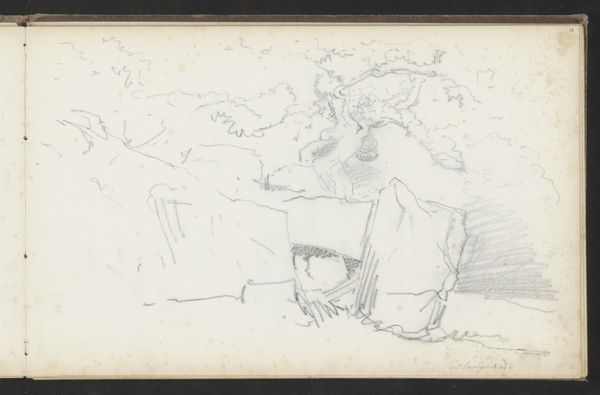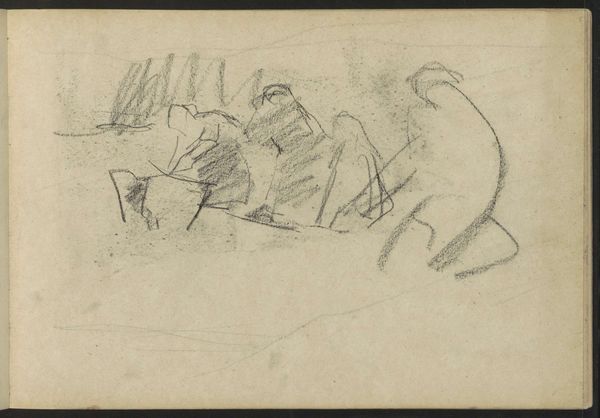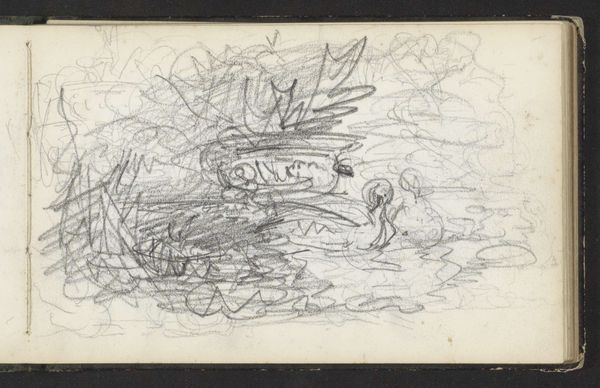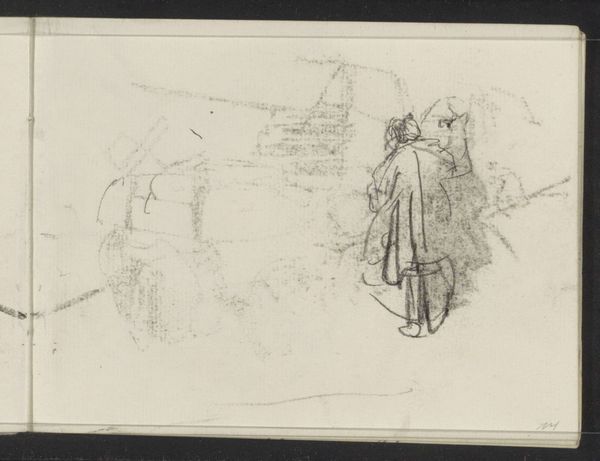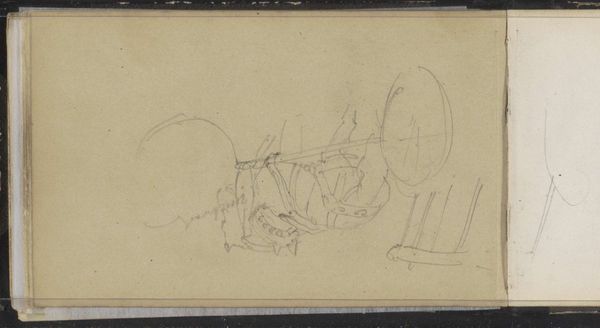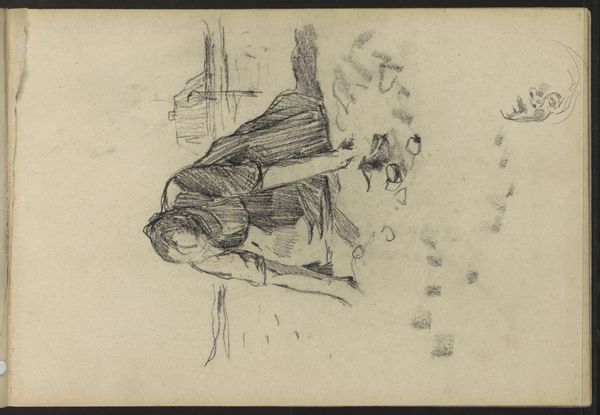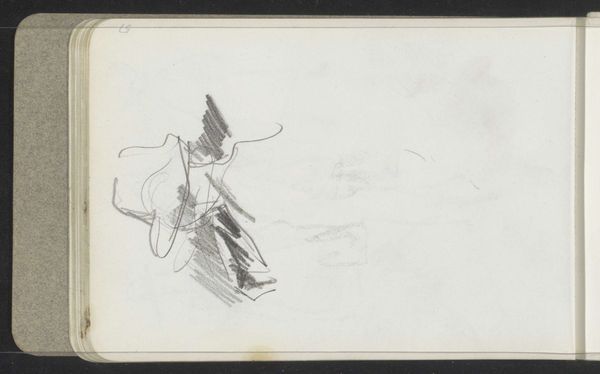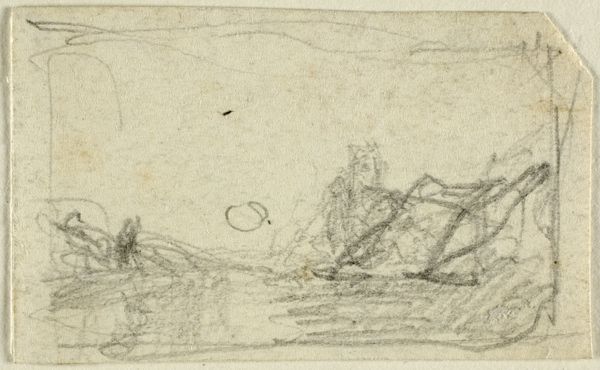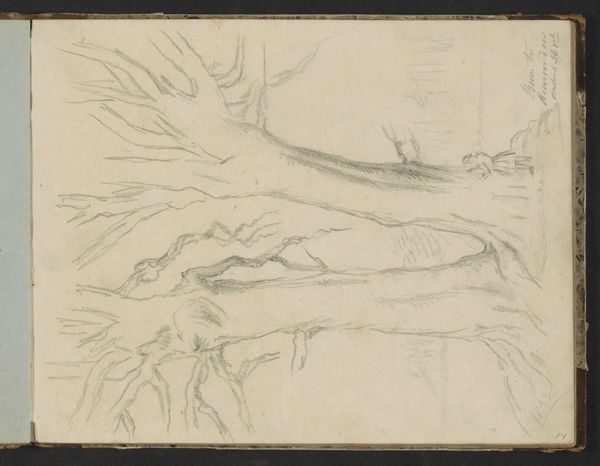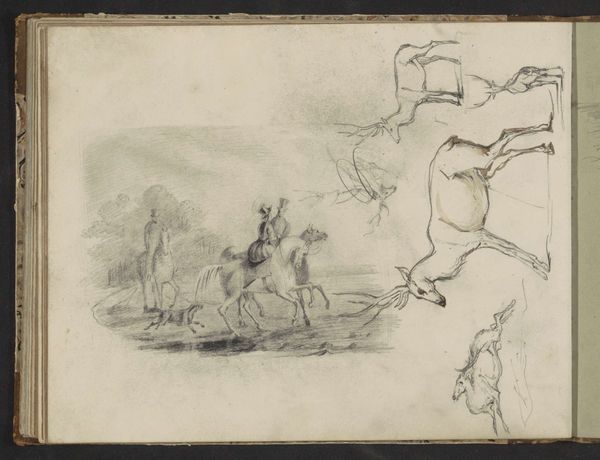
Copyright: Rijks Museum: Open Domain
Editor: This is "Man en vrouw in een interieur" by Maria Vos, made sometime between 1856 and 1870. It’s a drawing, a pencil sketch really, of a man and woman indoors. It feels unfinished, almost like a fleeting moment captured. What strikes you about this piece? Curator: Immediately, I’m drawn to the visible labor involved. Look at the repeated pencil strokes, the artist's hand so present. This isn’t about illusionism; it’s about the act of making. Given the period, consider who had access to art materials like paper and pencils. Who could afford the leisure to create such a work, even an unfinished one? Editor: That’s interesting. I hadn't thought about the materials themselves as a signifier of social status. How does that connect to the subject matter? Curator: Well, a genre scene like this implies domesticity, potentially even leisure. Was the making of this sketch, and potentially sharing this kind of genre scene, accessible across gender? Look at the roughness. It challenges the established academic approaches in that time period. How does the consumption of an image like this either subvert or perpetuate specific power dynamics? Editor: So, it's not just about what's depicted, but about the choices Maria Vos made in terms of materials and technique, which in turn reflect a specific social reality. The unfinished nature almost suggests that capturing reality in any permanent or total way would have been impossible. Curator: Exactly. The materials speak to both privilege and the limitations placed on artists. The rawness shows an artist wrestling with the dominant aesthetic of their time. This helps the work transcend that specific interior moment of "Man en vrouw in een interieur", inviting reflections of class, labour, and gender roles during Maria Vos' era. Editor: That gives me a whole new perspective. Thanks! I was seeing just a quick sketch, but it is much more.
Comments
No comments
Be the first to comment and join the conversation on the ultimate creative platform.
